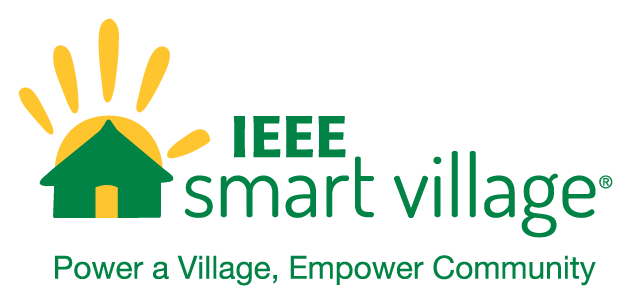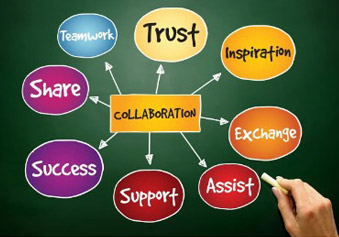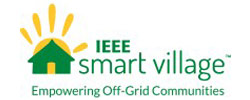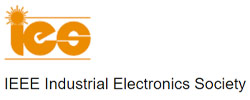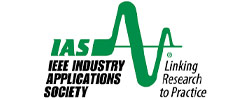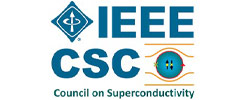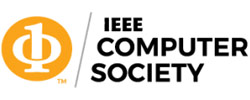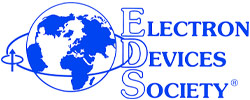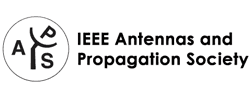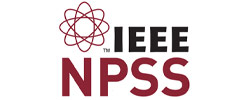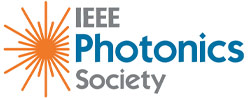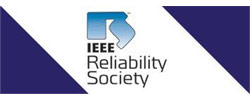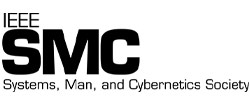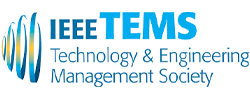EMPOWER: Vol 3. Issue 2 – April 2022
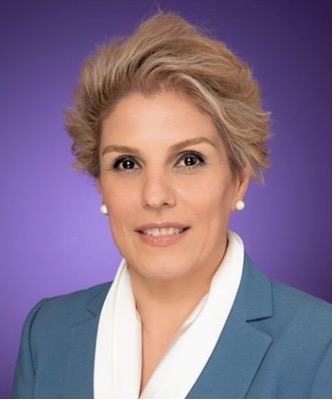
Women in Engineering: Happy International Women’s month
“The key to bridge the gender gap in STEM areas is to enable and empower female students in K-12”– Dr Morgan Kiani
Dr. Morgan Kiani is the upcoming secretary of the IEE Smart Village (ISV) governing board. She joined ISV in 2019 and has since participated in several initiatives and projects led by ISV around the world. She represents the IEEE Industrial Electronics Society (IES) in ISV and has been instrumental in securing substantial and growing engagement from the IEEE-IES in ISV projects since her arrival.
Dr. Kiani received her PhD in Electrical Engineering from the University of Texas at Arlington in 2009 with emphasis on control and monitoring of doubly fed induction generators used in wind energy harvesting. In 2011 she joined the Department of Engineering at Texas Christian University where she currently holds the rank of associate professor. Dr. Kiani’s research targets the integration and management of renewable sources of energy, optimal management and condition monitoring of distributed battery storage systems, and health monitoring in electric machinery and drives. She has published several highly cited articles in her field of research.
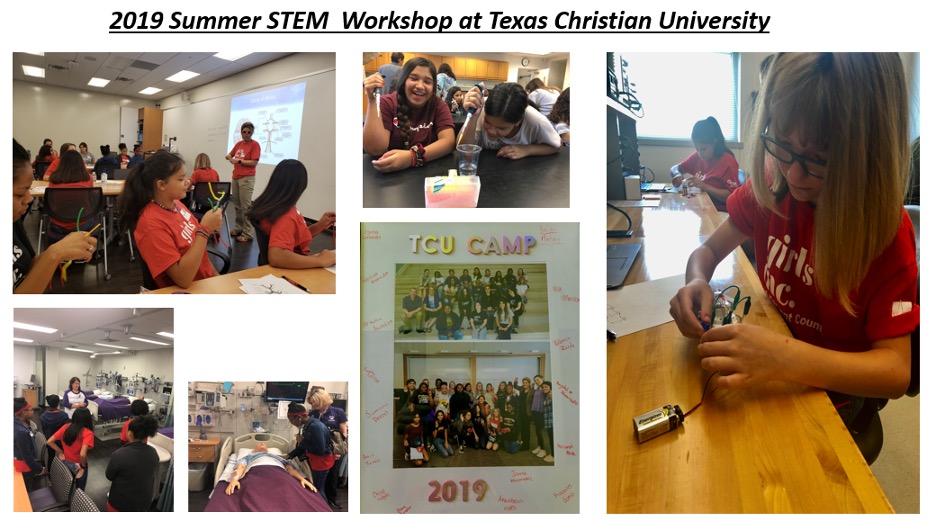
Her research, scholarship, teaching and service in engineering department at TCU, across IEEE societies, and non-profit groups have allowed her to empower individuals to engage in activities that promote access to clean green energy, healthy living, and well-being in urban communities and in other countries as well. She is an influential member of the Women in Engineering (WIE) committee in IEEE IES and provides mentorship to help women gain the confidence to set higher education and career goals. She is interested in attracting the next generation of minority and female students into Science, Technology, Engineering and Math (STEM) fields. Dr. Kiani believes that the key to bridge the gender gap in STEM areas is to enable and empower female students in K-12.
She is serving as an associate editor for IEEE Transactions on Transportation Electrification and IEEE Journal of Emerging and Selected Topics in Industrial Electronics. Dr. Kiani is a member of Administrative Committee as well as various technical committees in IEEEE Industrial Electronics Society. She is a member of ISV Governing Board, ISV education committee, and ISV technical committee. Dr. Kiani is serving as a technical support and project coordinator in South Latin American and Africa in IEEE Smart Village with her outreach initiative through IEEE IES society as well.
“The key to bridg[ing] the gender gap in STEM areas is to enable and empower female students in K-12”.
…. Morgan Kiani
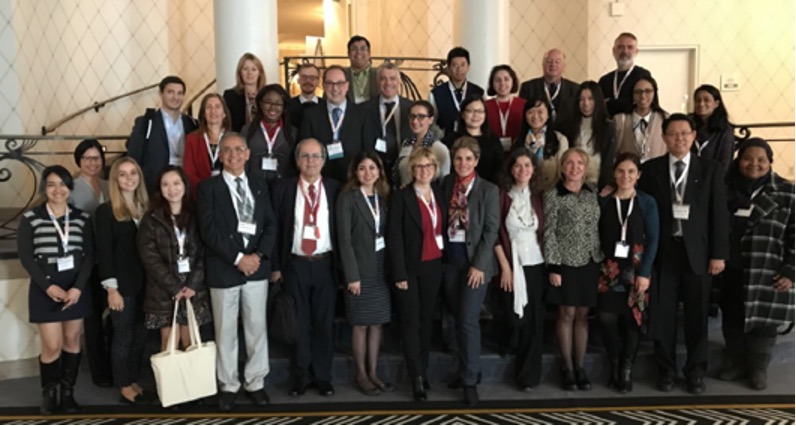
The 2018 Woman in IES Workshop in Washington D.C., USA

The 2019 Women in IES Workshop in Vancouver, Canada
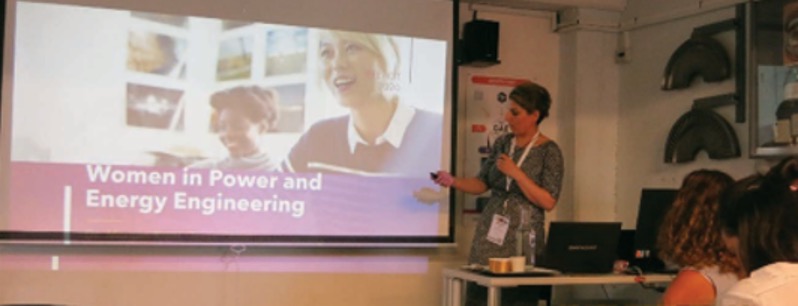
Prof. Morgan Kiani spoke on “Women in Power and Energy” in the 2020 Women in IES Workshop in Argentina.
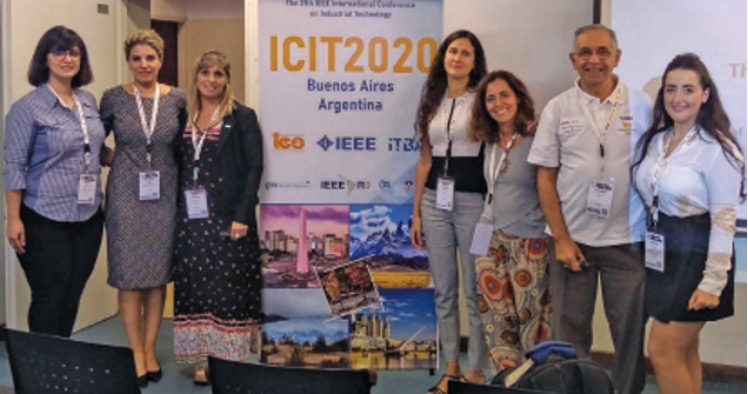
Speakers and participant in the 2020 Women in IES Workshop in Argentina.
The North American Working Group making significant progress
Since its creation in December 2020, the North American Working Group (NAWG) made the decision to promote the IEEE Smart Village (ISV) program to American Natives in the United States and Indigenous Peoples in Canada. The living conditions of many Indigenous Peoples/Native Americans are regrettable, lacking electricity, clean water, and little access to Communication Technologies, education, and professional development.
The ISV offers a three-pillar approach, which includes Energy, Education and Entrepreneurship underpinned with e-connectivity, a holistic community economic development to make lasting impact improving the living conditions of the residents in a cost effective and sustainable way.
At the initial meeting, the NAWG’ strong sense of historical wrongs and colonization, and a commitment to community development principles, led to the decision to take time to build solid, trusting, and respectful relationships. Several potential projects are listed in this article. The NAWG team has spent long hours with the groups to listen, develop concepts, write proposals, and complete application requirements. Thanks to NAWG members Ashok Das, Ayushi Sharma, and Rajan Kapur, for the initial heavy lifting and to Don Gingras and Sai Tallavarjula for stepping up to help reduce the workload soon thereafter.
The NAWG meets the fourth Thursday of every month, unless agreed otherwise. There are meetings to discuss projects on an as-needed basis.
Membership
IEEE Smart Village (ISVx) vision and program aligns with the needs of many vulnerable communities, with its three pillars of Energy, Education and Entrepreneurship to provide expert technical and other support to develop and implement solutions.
The NAWG is inviting anyone interested in making a positive and lasting impact on vulnerable communities to forever improve the lives of people and support their journey to a more sustainable and resilient lifestyle.
Participation Opportunities
The NAWG implements the ISVx three pillars for projects and supports specific campaigns such as encouraging ISVx Student Branches. The main task for the group is to promote IEEE Smart Villages, encourage applicants to submit viable projects, and build long term relationships The ISVx offering can include technical, financial and monitoring phases. Some of the tasks include:
- Community Engagement
- Proposal Writing
- Social Media
- Concept Note review
- Liaison with Collaborator(s)
- Administrative and application assistance
- Annual Indigenous Summit
Projects in Development
NAWG community strategy is collaboration by working with the local leaders of trusted organizations to develop or enhance skills within the community to design and implement internet connectivity using line-of-site communication and/or wireless internet; and develop community centers to provide adult literacy and numeracy, health and hygiene education, IT training, and women’s empowerment programs.
- Dine’ College
Rooted in Diné language and culture, its mission is to advance quality, post-secondary learning, and development to ensure the well-being of the Diné People. The School of Business and Social Sciences prepares students for business administration and management, ICT, and CIS.
The ISV NAWG has interacted with Dine’ college on a proposal to establish a living solar laboratory on the Dine’ college campus for student and local enrichment on solar energy systems.
- Indian Country Grassroots
IEEE SV NAWG partnered with Indian Country Grassroots Support (ICGS) in association with Shiprock Food Access Coalition (SFAC) and Pace Energy and Climate Center to develop a proposal to improve the farming conditions within the Navajo Nation starting with Shiprock (currently has 380 farms) by developing a low carbon emission community that includes greenhouse, cold-storage system, a processing unit for farm harvest, and explore the option of electrical vehicles for Farm-to-School and market connections.
- Sedona Greenhouse
The Sedona Greenhouse Project is to enhance the educational program and include Native Americans organizations more intently in Arizona. The Sedona Greenhouse Project has a robust community engagement program that invites participation, volunteer opportunities and education, including permaculture techniques with a solid social media campaign.
There are a number of projects that are pending review from community submission and from the University of Calgary.
Going Forward
The NAWG goal is to have three projects started in North America that incorporate the ISVx pillars making lives more economically viable, the environment more sustainable and social well-being more accessible. This is possible through collaboration, mentorship, expert support, and financial seed funds.
Join the collaboration and help the NAWG reach its goal and increase its reach across North America to make life better for many entrepreneurs and communities. Together we can accomplish this.
Thank you,
Joan Kerr on behalf the NAWG Team members:
- Ashok Das
- Ray Larsen
- Rajan Kapur
- Wei-Jen Lee
- Irene Herremans
- James Denney
- Ayushi Sharma
- Don Gingras
- Sai Tallavarjula
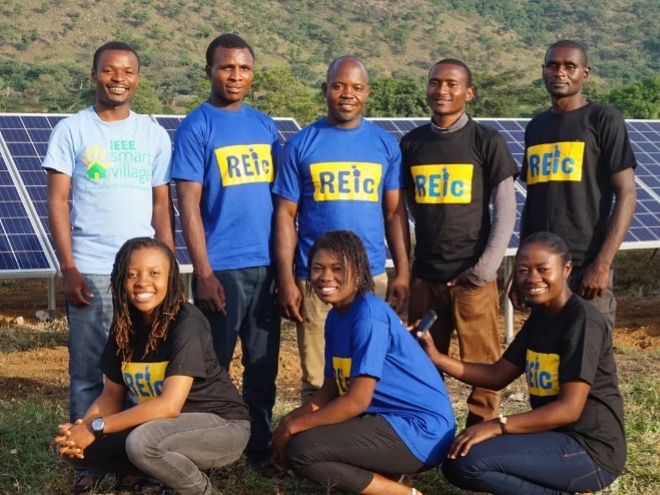
ISV Entrepreneur Highlight
IEEE Smart Village (ISV) is a unique IEEE humanitarian program in which seed money is provided to potential entrepreneurs to develop a profitable company to bring renewable energy, typically photovoltaic electricity, to off-grid villages around the world. Each potential project requires a business plan which is reviewed by ISV Development Committee. The plan must show profitability and a growth plan, and include the three pillars which are electricity, education, and entrepreneurship. To empower off-grid communities, ISV has learned that educational and entrepreneurial opportunities must also be included which, when combined with electricity, will greatly empower the community with opportunities which would not exist with only the provision of electricity.
ISV saw the need to decentralize its activities to meet and understand local conditions using local volunteers. To accomplish this, it set up five regional working groups which include:
- AWG – Africa Working Group
- CWG – China Working Group
- LAWG – Latin America Working Group
- NAWG – North America Working Group
- SAWG – South Asia Working Group
One of the many successful IEEE Smart Village Entrepreneurs is Jude Numfor, located in Cameroon, Central Africa. He is the Chief Executive Officer of Renewable Energy Innovators – Cameroon (REIc). I had the pleasure to interview Mr. Numfor for this article.
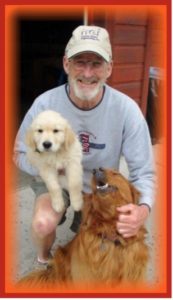
John P Nelson
John: Good day, Jude. I would like to start this interview by allowing the readers to know a little bit about you. You are a young entrepreneur who has taken on a large challenge in electrifying villages in Cameroon. Can you provide the readers with a summary of your background? Since the readers may know little or nothing about you, please do not be bashful and provide as much detail on yourself as possible.
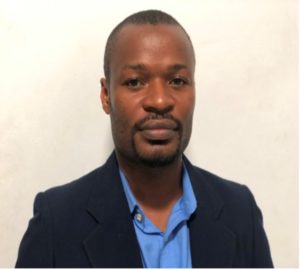
Jude Numfor
Jude: I was born in the remote village of Mbem in the Northwest Region of Cameroon. Mbem is a village that remained without access to electricity until 2013. So, I was born in darkness, grew up in darkness and studied with the bush-lamp and candle. It was not easy. Imagine waking up every morning with swollen eyes strained by the smoke and dim lights from a kerosene lamp. At the time, I knew no alternatives. The only other alternative was a petrol generator which I can remember was owned by only two people in my entire village. I remember we would go to these people in the day to find out whether they were planning to turn on their generator at night so that we could come and watch television. Most often, we would carry out chores for the generator owner so that by evening when they turn on the TV we would be allowed to come and watch. In most cases when the generator came on, the entire village would gather and young kids like us would be pushed to the back. My friends and I would look for a crack in the wall or in the window as a peeping hole to the TV. Only grownups had seating space. It is also disrespectful to sit while your elders are standing. So, the best chance was usually through the windows.
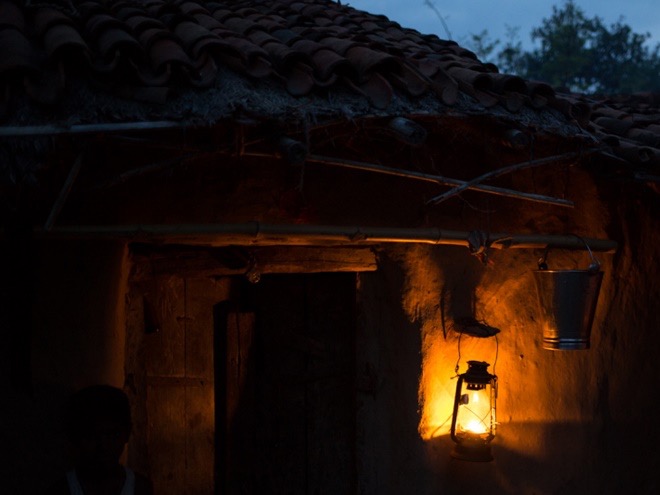
No Access to Electricity
In Sept 2000, I lost my father whom I loved very much. Life became very painful for me in my village. To cheer me up, one of my brothers decided to take me to another village, about 400 km away where he was working as a nurse. While there, I met this missionary family who were friends with my brother. The family took some interest in me and decided to take me in as part of them. That is when my whole life changed.
In this new home, there was solar power. I learned how to turn on the lights and I showered instead of a having a bucket bath. I saw the fridge, I had ice cream and the best gift was that I could watch the TV. I watched Dora the Explorer, Lion King and many more as many times as I wanted. I saw and was able to use a computer, the magical machine, for the first time It was truly a new life. While enjoying this, I could not stop thinking about my friends back in my village who would love to experience these things. This thought created in me a passion to bring this opportunity to my friends in Mbem.
My new family, being westerners, understood this passion and supported it but unfortunately, there was no school in Cameroon teaching solar energy. They decided to set up a library for me full of books on electricity, management, engineering and so forth. They also allowed me to learn from my attempted repairs on the solar system in the house whenever there was a problem.
In 2006, we started an NGO called Wireless Light and Power (WL&P). WL&P was an initiative with a mission to replace all bush-lamps with a locally fabricated, rechargeable lantern called the “light pack”. WL&P operated between 2006 and 2010, then pivoted to a commercial entity called Renewable Energy Innovators Cameroon (REIc). With REI, we provided rechargeable lamps and started developing mini grids. These provided full power beyond just lights which the rechargeable lamps were providing. The first mini grid was tested in 2010 and has since then been expanded to eight villages in Cameroon, REIc plans to electrify 760 villages in Cameroon during the next eightyears. In 2017, REIc got its first external seed support from IEEE Smart Village (ISV) and ISV has continued to provide support to the initiative through various additional funding. With this traction, REIc just secured $1 million of support from the USTDA to sponsor feasibility studies toward the electrification of the 760 villages. So, I was born in darkness, grew up in darkness but now I bring lights!
John: Jude, that is quite an amazing story. I would like to start out by asking you what was your motivation for setting up Renewable Energy Innovators – Cameroon (REIc)? I am sure that you could have done many other things.
Jude: It was the passion to give the same newfound opportunity to my brothers and friends in my village, opportunity to watch TV whenever I wanted, opportunity to turn on a light bulb and read whenever I wanted and so forth.
Now for REIc, we aspire to expand our initiative across Africa because I realized lately that there are many other brothers and sisters in other African countries with the same challenges as the people in my village. “REIc” for Cameroon, “REIk” for Kenya and so forth. We have plans to be Pan-African.
John: Let’s concentrate on REIc. Please describe what REIc does including its past, present, and future plans:
Jude: REIc is a solar engineering firm delivering reliable solar solutions to villages, homes, businesses, and institutions. REIc has created strategic partnerships with original equipment manufacturers (OEM) such as SimpliPHI Power, Schneider Electric, Solark, Steamaco, Sparkmeter, and others to deliver quality hardware and services with significant honorable warranties – a thing which is lacking in the solar sector in Africa. In 2019, REIc qualified and was certified by IEEE Smart Village as a manufacturer of the IEEE iconic SunBlazer. This allows REI–c to commercialize the modular technology across Africa and beyond.
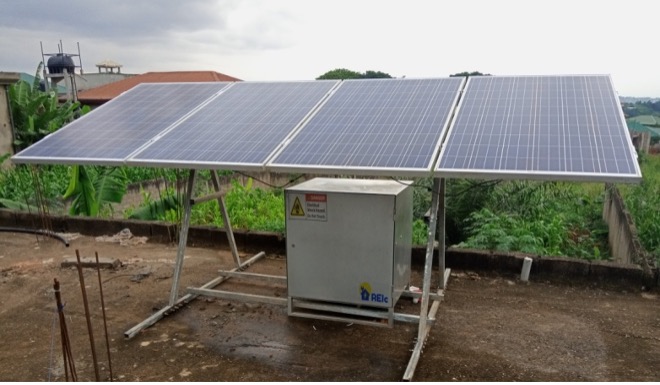
REIc SunBlazer Franchise
In addition to these engineering services, REIc has developed and is executing its own solar PV with storage mini grids for rural electrification across villages in Cameroon. REIc plans to electrify 760 villages in the next few years, starting with 134 villages in 2022 to 2023. These mini grids provide access to electricity as well as connectivity and digital education services. REIc is also positioning itself as the go-to solar engineering expert for anyone wanting to venture into the electricity business in Africa.
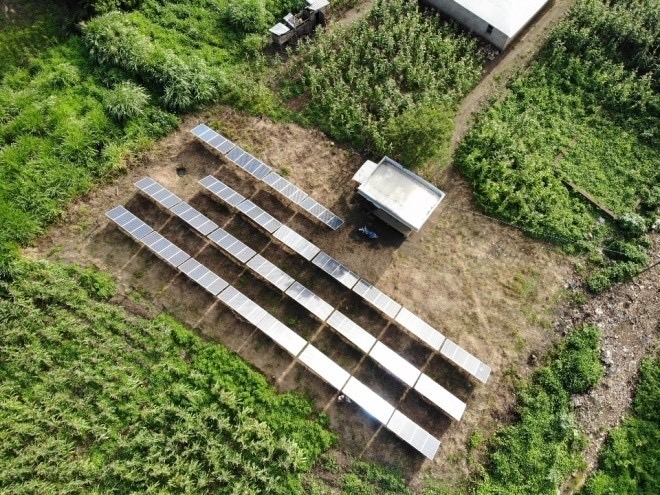
REIc Mini-Grid Power Supply
John: Your REIc goals are commendable. Africa has roughly 1.2 billion people and roughly 500 million people have little or no access to electricity. What is the situation like in Cameroon?
Jude: Official statistics show that there are more than 10,000 villages without access to electricity in Cameroon. REIc is looking to support 760 which is less than 10% of this need but it is huge.
John: You are correct that bringing electricity to 760 villages in Cameroon is a worthy and remarkable goal. Let’s change topics a little. I understand that REIc has a strong education program using an REIc developed software called EdEasy. Can you describe the software App, why you developed it and the purpose of the EdEasy App?
Jude: EdEasy is a server-based digital education platform which we deploy using Wi-Fi hotspots across villages that have been electrified with our mini-grids. This platform hosts content for basic literacy, numeracy and ICT and it is used by youths and adults in the villages who have missed formal education or have chosen vocational trade programs over formal schools. The curriculum is tailored toward enhancing critical thinking and good business communication and analytical skills in those that sign up. EdEasy does not replace formal education or classroom work; rather it enhances learning and excelling in a practical skill with or without formal education.
John: The EdEasy App appears to be quite interesting. However, it appears that Wi-Fi is required. Having connectivity to the outside world is essential for a good education program. I understand that you have developed a method of connectivity and use that connection for a local intranet system. Can you please describe how this system works including connectivity, communications and so forth? Is this a profitable venture?
Jude: Thank you for this question. First, we developed this mainly as a medium needed for the delivery of EdEasy content. But then we realized that access to the Internet was a major need as well. So, then we added internet as a service to the network.
It is a simple radio network on the free 5.0 GHz and 2.4 GHz bandwidth. We use Ubiquity Omi stations and access points to create Wi-Fi mesh networks in the villages. With this, network, villages can connect to a server that hosts the education content. This internet also has an internet management infrastructure called SAIS which assigns IP address and allows us to charge a fee per connection for the Internet time and/or data volume. This is where income is generated from the Internet; SAIS itself is connected to an Internet Service Provider (ISP), most often Satellite ISP for Internet and then redistributes it in the village, controlling speed, volume, and time.
Yes, it is a profitable venture, and it increases productive use of electricity on the mini grid.
John: What do you see as the greatest challenge for REIc?
Jude: Our greatest challenge is poor regulation. While the investors are wondering how we can possibly make money, the regulators (governments) think that we have a lot of money. They look just at the amount of assets that are mobilized per mini-grid and conclude that the entrepreneur is already rich and should not be allowed to make money. We wish they could see the huge investment in assets compared to the market and see that it would take forever for any developer to make a return on investment, if at all. This is our biggest challenge we need to educate the regulator about the mini-grid business, and they don’t listen.
In my opinion, off-grid electrification should be deregulated, made a free market, and if the villagers cannot pay for the electricity service from mini-grid developers, they will simply stop buying the power.
John: Jude, it sounds like you are a free- market advocate and I understand what you are saying. The off-grid systems need to stand on their own and not be regulated like a large metropolitan electric utility.
Next, what do you see as the greatest accomplishment to date for REIc?
Jude: The greatest accomplishment for us is the lesson learned from our extensive research and development in the off-grid sector. We know our villages, what they want and how they want it. 90% of the REIc team are people who have lived the village life without electricity. Therefore, we believe that we stand a chance to succeed as a pan-African initiative serving off-grid communities. It has been 17+ years since we started.
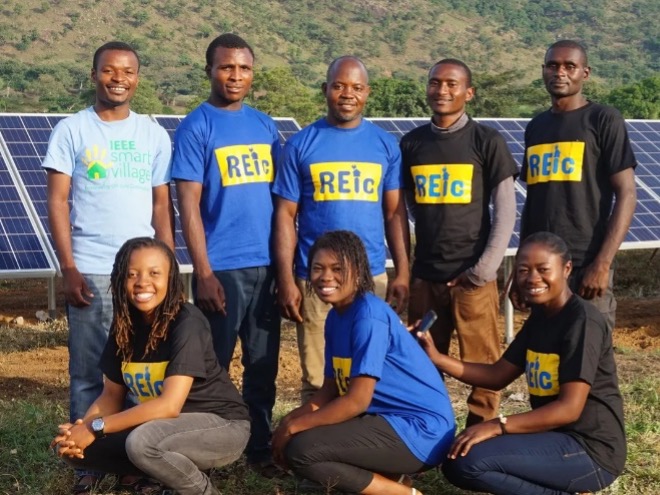
REIc Team
John: Providing electricity and educational opportunities to the community empowers the people to develop businesses. What has been the impact of bringing electricity to the communities you serve and what kind of businesses have been developed?
Jude: That is right. We have seen new businesses pop up after electrification while others have been enhanced. Businesses like barbering, cold stores, documentation offices, welding and so forth have been created and are highly successful.
John: REIc has been active in supporting other IEEE Smart Village entrepreneurs. For example, you have worked closely with the team at the Maa Trust in Kenya and the possibility of providing training for RDO in Tanzania. Please describe what you have done and how this may impact REIc.
Jude: Thank you. As I just mentioned, we recently realized that the problems we have in off-grid Cameroon are the same in other African countries where people remain without access to electricity. Also, we are in Cameroon and know the context in Cameroon better then Kenya. But to provide the same level of service in Kenya or Tanzania, we have created technical relationships with electricity entrepreneurs in those countries. REIc’s approach, therefore, is to train other electricity entrepreneurs to provide the level of quality and reliability in their respective countries that REIc provides in Cameroon. ISV is supporting many energy entrepreneurs who want to venture into electricity businesses across the continent and REIc, being an ISV-supported enterprise, wants to share the know-how and create footprints across Africa. To create sustainability, REIc’s training goes with life-time business support in a franchise-type relationship with the trained entrepreneur.
John: REIc has received a grant from USTDA to determine the feasibility of expanding REIc to roughly 130 villages and ultimately to roughly 760 villages within Cameroon. Can you discuss the significance of the grant, who is involved and what is the planned outcome of the grant?
Jude: Thank you. This grant is our launching pad! We have extensive experience, we have piloted several mini grids, we have built and are expanding our team, we are building partnerships with OEMs and we have built trust in villages and with the government. With all these it is time to scale. This grant is the first step towards scaling our mini-grid program to several villages. The grant is to support feasibility studies in 134 villages in Cameroon. In addition to the USTDA grant, we secured $200K from ISV to implement a mini-grid whose operational data will be used to feed the studies.
The study is being conducted by three US firms including the National Renewable Energy Laboratory (NREL), Morua Power and SimpliPower, as well as a local survey firm, GROUCONSER. The deliverable producr of the grant is a detailed report on the feasibility of electrifying 134 qualified villages in Cameroon using the REIc business model and the SunBlazer technology. With the report, REIc will have the necessary details (credentials?) to attract the needed financing for the implementation of the mini grids.
John: You have been a long-standing entrepreneur with IEEE Smart Village. How has IEEE Smart Village impacted REIc?
Jude: A lot! The first time I got introduced to IEEE smart village was in 2012 by the Torch Bearers Foundation. Since then, it has been a very beneficial relationship. We have gotten invaluable pro bono support in various domains of business and technology, and we have been exposed and introduced to great partners. One great support is the seed financing from ISV which we have gotten. This made a huge difference. It allowed us to test our business in dimensions that we would never have been possible without it. Thank you, IEEE Smart Village!
John: We have set up this interview knowing that the time difference between Evergreen, Colorado and Yaounde, Cameroon is eight hours. An 8 AM meeting in Colorado equates to a 4 PM meeting in Cameroon. As a result, you are required to attend IEEE Smart Village meetings that can be later afternoon or into the evening hours. What has been the impact of the time difference between Cameroon and the US in attending meetings and conducting business?
Jude: Well, this is an interesting question. Most of the time while my other team members are going home, I have to stay back to attend these meetings, or sometimes in the car while leaving the office. Also, at 4 pm, as you know, one is looking forward to retiring for the day but for me, since I have several of these kinds of meetings with external supporters and partners, I tend to work until 8 pm. Zoom makes it better in that I can be taking dinner while listening in, I can be driving while attending the meeting and so forth. So, it is not a big challenge.
John: We have covered a lot of ground during this interview. Could you please provide some closing remarks including topics we may not have covered?
Jude: Thank you for taking the time to carry out this interview. I would love to do more of them. I believe there are many youth like me who may read this interview and be inspired or motivated to follow their passion and do impactful things in their communities.
CONCLUSION
I hope that you enjoyed this discussion between me and Jude Numfor. IEEE Smart Village is very proud of the accomplishments made by Jude and are encouraged by his passion to provide electricity to off-grid communities.
As you noticed, Jude is making a difference in Cameroon and expects to impact close to 10% of the off-grid villages. However, for Jude, this is just the beginning in addressing a much larger population in need.
Jude is helping support Patrick Ryan’s vision in a strong IEEE Smart Village Program where he was instrumental in getting projects like Jude’s funded. Please feel free to help support IEEE Smart Village through a fund developed in the Memory of Patrick Ryan, past executive director of PES and mentor of IEEE Smart Village. Please check out the website and consider a donation.
https://www.ieeefoundation.org/PatrickRyan
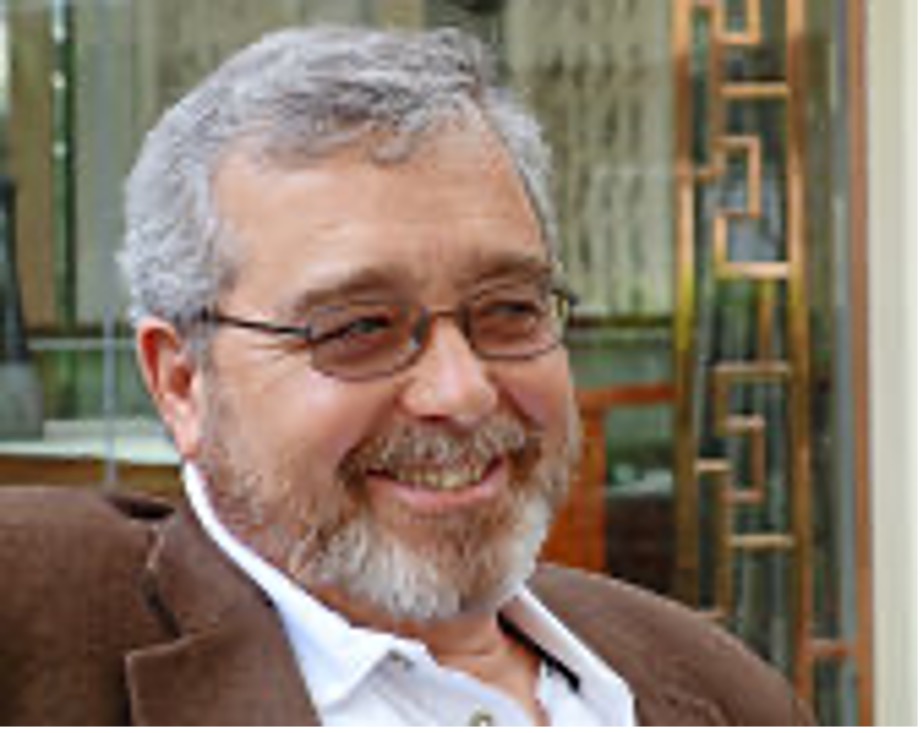
Patrick Ryan

The 2022 IEEE Power & Energy Society T&D Conference is here!
This year’s conference and exposition is hosted in New Orleans and the theme is “Power in Connections.” Expect interesting Sessions, Reception, Plain Talk, Tours, and much more from this three-day conference.
For more Information Visit: https://ieeet-d.org/
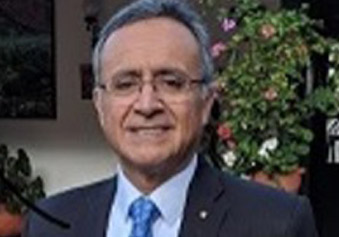
Meet New ISV Board of Governors Chair
Dr. Fernando Guarin was appointed chair of the IEEE Smart Village (ISV) board of governors in January 2022. He also serves as the representative of the IEEE Electron Devices Society (EDS) to ISV and has been a strong advocate for increased involvement and coordination across all of IEEE Societies in humanitarian projects, contributing funds and their technical expertise.
Dr. Guarín is an IEEE Fellow, Distinguished Lecturer for the IEEE EDS, where he has served in many capacities as member of the IEEE’s EDS Board of governors, chair of the EDS Education Committee, Secretary for EDS. He was the EDS President from 2018-2019 and is now the EDS Senior Past President. Since his introduction as EDS President of project funding for humanitarian and STEM projects, EDS has contributed over $1.1M for projects in all regions of the world. In 2011 he launched the EDS-ETC program (https://eds.ieee.org/chapters/the-eds-etc-program) that has impacted over 16,000 children across IEEE Regions.
Since 2016, Dr. Guarín has worked as a Distinguished Member of Technical Staff at GlobalFoundries in East Fishkill New York. He retired from IBM’s SRDC after 27 years as Senior Member of Technical Staff. He earned his BSEE from the “Pontificia Universidad Javeriana”, in Bogotá, Colombia, the M.S.E.E. degree from the University of Arizona, and the Ph.D. in Electrical Engineering from Columbia University, NY. He has been actively working in microelectronic reliability for almost 40 years.
From 1980 until 1988 he worked in the Military and Aerospace Operations division of National Semiconductor Corporation. In 1988, he joined IBM’s microelectronics division where he worked in the reliability physics and modeling of Advanced Bipolar, CMOS and Silicon Germanium BiCMOS technologies. He is currently leading the team developing reliability standards and qualifying GlobalFoundries RF millimeter wave 5G technology offerings.
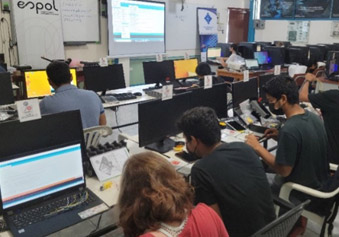
Digital Literacy, Sustainable Energy, Economic Development, Telehealth, and Community Transformation on the Galapagos Islands
The intranet project in the Galapagos Islands was proposed by the group to the IEEE Humanitarian Activities Committee (HAC) through the IEEE-ESPOL Student Branch, which was approved with a funding of $50,000 in November 2018. Its implementation was started by a group of volunteer students from ESPOL and the University of Villanova, during the first trip to the island in January 2019.
Located 600 miles off the Pacific Coast of Ecuador, the Galapagos Archipelago is one of the most important natural reserves in the world. People from around the world visit the Islands to see their beautiful nature and landscapes. The primary economic activity of the 35,000 people living on the four populated islands of San Cristobal (administrative capital), Santa Cruz (tourism hub), Isabela and Floreana is tourism. There are several challenges the local people face due to the archipelago’s location such as education, power generation, health care, transportation, and access to technological resources (especially connectivity) requiring innovation and creativity.
Four years ago, the “Intranet Project” was born initially as a proposal to improve the educative conditions of Galapagos’ high schools, installing a local network between them. The group that comprised of a representative of Beyond Chacay Foundation (Ph.D. David Lansdale), University of Villanova (Ph.D. Pritpal Singh), and Escuela Superior Politécnica del Litoral, ESPOL (Ph.D. Cesar Martín) further discussed issues of how to:
- Upload a download digital content stored on a local website (using a client-server model system).
- Communicate via chat or video with other people faster than using the internet.
- Connect to service easily through ethernet on a computer or Wi-Fi on mobile devices (using routers installed in each high school and in some different common public points).
The project was proposed by the group to the IEEE Humanitarian Activities Committee (HAC) through the IEEE-ESPOL Student Branch, which was approved with a funding of $50,000 in November 2018. Its implementation started by a group of volunteer students from ESPOL and the University of Villanova, during a first trip to the island in January 2019.
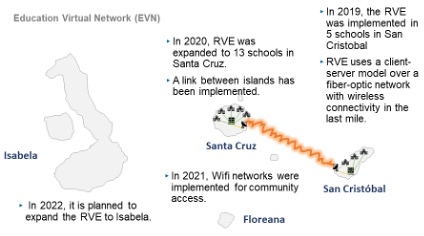
The current state of the Intranet Project
Galápagos has extended the intranet to Santa Cruz Island and there are efforts to train teachers and students on topics of digital resources. A team of students from the University of Villanova (Viviana Villavicencio) and IEEE-ESPOL (Vielka Villavicencio, Juan Sánchez), partners from the local ONG “Fundación un Cambio por la Vida” (FUNCAVID, represented by Daniel Proaño), the Internet Society and IEEE Smart Village visited the project early this year. This time the activities took place in Santa Cruz and San Cristóbal, touching on the three main subjects of interest: education, health, and sustainable energy; all of them related to the intranet.
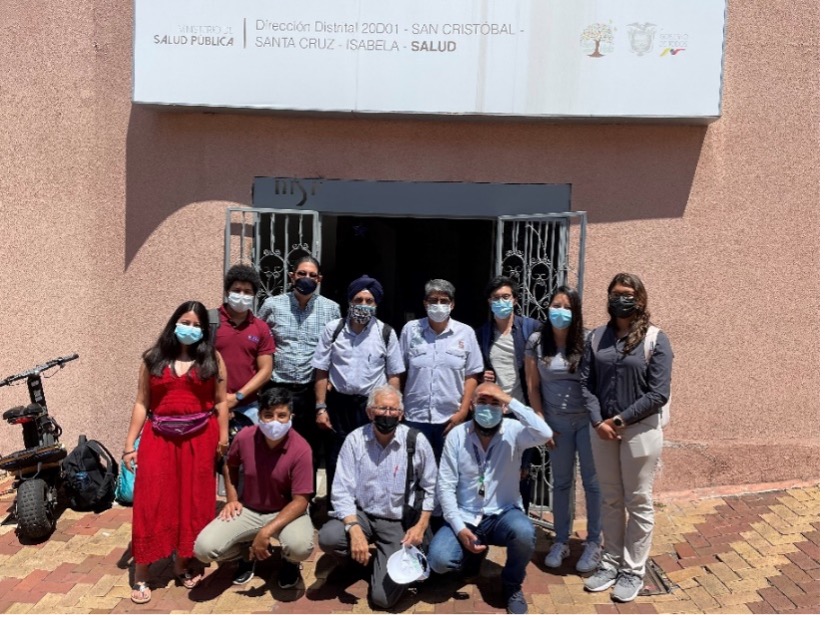
January 2022 volunteer team
A group of IEEE student volunteers conducted a brief training on how to use the intranet under the title “Introduction to technology and programming.” This included instructions on how to upload and download content from the webpage. It was discussed the need to improve the diffusion of the project among the educational community and the public to encourage them to take advantage of this resource because there are still many people who don’t know it exists.
This was followed first steps in coding and how to use it for creating basic electronic systems through the Arduino UNO board. This was possible thanks to the donation of 28 Arduino kits signed by ESPOL as part of an agreement between the university and the Ministry of Education in Galapagos.
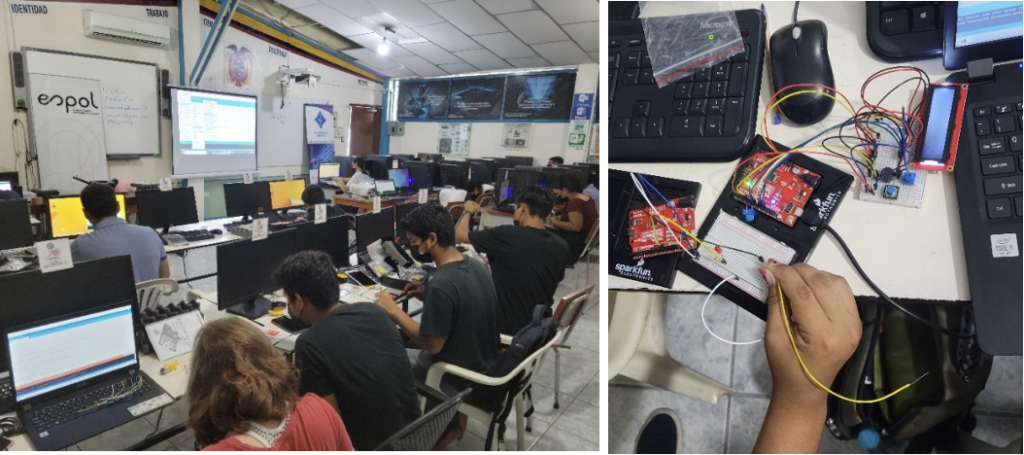
Technology workshop in Santa Cruz
On the health side, during the visit to San Cristobal, several meetings were held among the volunteers’ team, the Ministry of Public Health, and ECU911 (immediate and comprehensive emergency response service in Ecuador). During the meeting, it was proposed that most of the infrastructure, like hospitals and offices, to have intranet. This comes with several advantages, for telemedicine, emergencies, to spread health-related content like covid prevention campaigns or guides about first aid, among others. With these benefits the team agreed that it was required to increase the network infrastructure to host more data and information about the health system, added to the existing educational platform. It meant more physical servers, wired connections, routers, software development, and a volunteer workforce. The proposal received interest from the parties as such their energies were directed to reach this goal.
For Galapagos, energy is the third most important subject. Another workshop was held, titled “Renewable energies – solar energy,” which was aimed at the public in general. The meeting was a platform to show the importance of energy, how the resource works and its generation. It was also pointed out how non-contaminant sources are crucial in fragile environments, like the Galapagos, as pollution can cause damaging impacts on its nature.
The entity in charge of this matter is Elecgalápagos, in which the volunteer team had a meeting to know the projects they are currently running and discuss different ways the intranet could help. The discussion rounded on electric vehicles and new ways of distributed power generation.
All in all, a lot of work still needs to be done in terms of technical requirements for the Intranet Project. There is need for coordination in software development, physical connections, workshops preparation, as well as non-technical pending works like more public diffusion about the intranet service, fundraising, agreements with the ministry of public health and NGO partners, callings for volunteers, among others. All initiatives are also accompanied by responsible planning, good teamwork, correct networking with sponsors, and motivation for making society a better place to live. The door is open for everyone who wants to reach this goal in the Galapagos community.
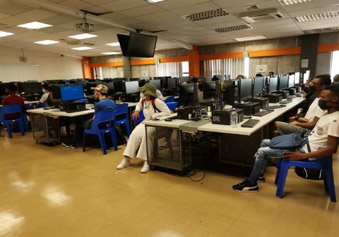
University of Johannesburg ISV Student Branch welcomes first-year students
The University of Johannesburg IEEE Smart Village (ISV) Student Branch has grown its membership with 45 new members from the batch of incoming freshmen. The Student Branch welcomed the 2022 intake with an introduction of ISV three pillars and its work around the world. The students were also briefed on the three projects that the Student Branch is currently working on.
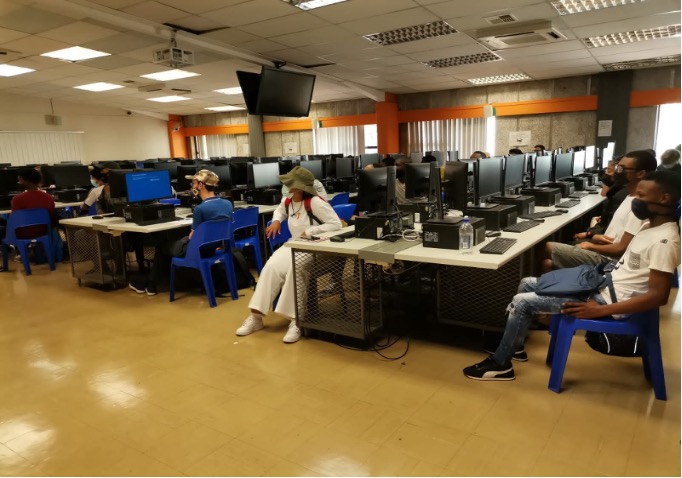
University of Johannesburg first year students welcomed by ISV student Branch leaders
The three projects include the e- mobility, the microgrid and the robotics projects. The team under the e-mobility are building an e-bike for inter-campus use and greenhouse products for optimal use.
With the microgrid project, the Student Branch is involved in designing a smart microgrid for Bulungula, a village in Eastern Cape and they are paying visits to several power stations to enhance their knowledge on microgrid designs and implementation. Meanwhile, the robotics team has equipped its members with the UiPath course and is developing a robotics app.
The team is also involved in an interesting mentorship program where the first year students have an opportunity to interact with graduates, for academic goals and career development.
The leadership is further excited about the world returning to normality as this gives them a space to execute their projects and continue building the ISVx brand in South Africa.
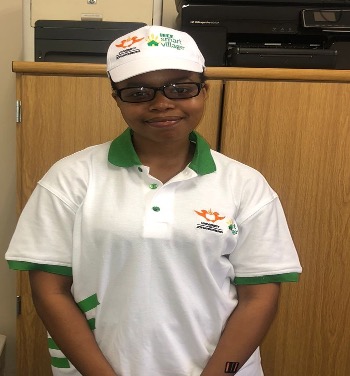
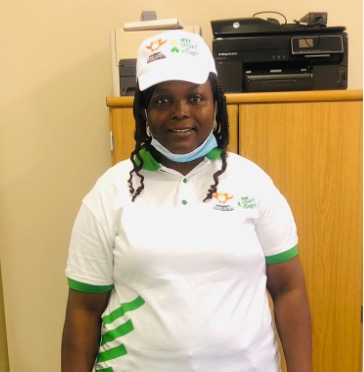
Important links you don’t want to miss!
Not an IEEE Member? Here’s how to join IEEE https://www.ieee.org/membership/join/index.html
Click here to learn more about IEEE membership and special discounts for developing nations and low-income economies at https://www.ieee.org/membership/join/emember-countries.html
For more information about discounts for societies, check out the following link: https://www.ieee.org/communities/societies/index.html
For contributions towards many of such projects in memory of Pat Ryan, visit IEEE Smart Village via the following online page : https://www.ieeefoundation.org/PatrickRyan
